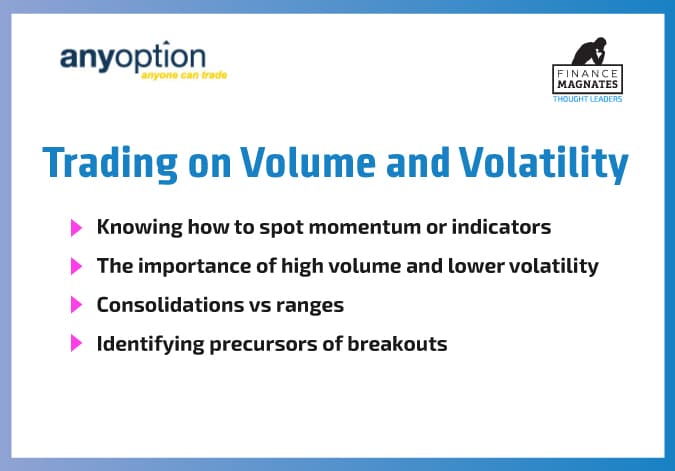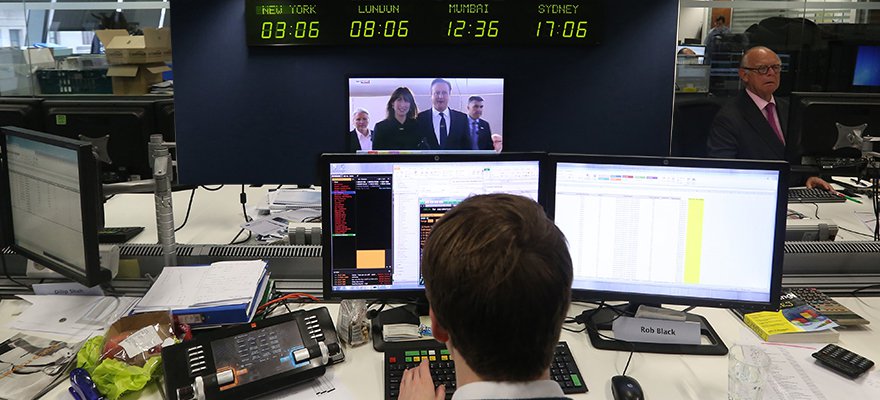When it comes down to it, trading is all about finding and capitalizing on market momentum. No matter if it is a trend following strategy or a contrarian strategy designed to run counter to an asset’s trading momentum, volume and Volatility play an integral role in determining the strength or weakness of price momentum.
Take the lead from today’s leaders. FM London Summit, 14-15 November, 2016. Register here!
Indeed, volume and volatility can also influence whether or not an instrument is on the cusp of a breakout or a reversal depending on how price behavior is acting. Due to the fact that breakouts and reversals are amongst the most high-octane opportunities available to traders, knowing how to spot them along with the factors that confirm their existence is crucial to successfully trading these investment prospects.
Currencies or commodities tend to trend directionally for long periods of time
The Basics for Spotting Changing Momentum
Momentum, or the pace by which an assets price is changing, ebbs and flows with time. Although some asset classes like stocks have a tendency to spend more time trending sideways, oscillating horizontally until a fundamental change spurs directional momentum, other asset classes like currencies or commodities tend to trend directionally for long periods of time.
While trending, an asset’s momentum experiences changes, some of which can mean an increased pace of price appreciation and depreciation or a reduced pace of price changes. In order to get a better feel for when momentum is in early stages, which is typically the best time to take advantage of trends or reversals, volume and volatility play a critical role in the identification process.

Volume, or the total amount of turnover in an asset over a defined period of time combined with volatility, which tells us how much prices are moving or not moving in relation to historical price movements, give crucial hints as to whether prices are consolidating or trending strongly in one direction or another.

Generally speaking, strong momentum is accompanied by higher volume and volatility, whereas weak momentum would be characterized by lower volume and lower volatility. However, one important note to consider is that it is always wise to evaluate momentum over multiple time horizons to get a better feel for the trend and how price action is behaving relative to recent and historical data points.
It is always wise to evaluate momentum over multiple time horizons
Consolidations and Ranges
Breakouts and reversals typically occur after long periods of an instrument’s price ranging between horizontal support and resistance or a triangular consolidation of prices. In the case of a horizontal trading range, ranges that are accompanied by low volatility, or very small changes in price, combined with low trading volumes, are typically an early sign that breakouts are approaching.
Once an instrument experiences a candlestick close below or above the range, or a breakout, confirmation generally comes in the form of higher volatility and increased volume, two hallmarks of momentum.

Aside from ranges, triangular consolidation provides great breakout and reversal trading opportunities, following in many ways the same form as a horizontal range-based momentum breakout. The convergence of the price action is a strong indicator of narrowing volatility and when accompanied by falling volumes, indicates that the asset is rapidly approaching a breakout.
The convergence of the price action is a strong indicator of narrowing volatility
Unlike horizontal ranges, triangles are slightly easier to time for breakouts and often provide better risk-reward conditions. A triangle breakout would be indicated by a candlestick close outside of the triangle. Furthermore, if accompanied by rising volatility and volume, the breakout and directional momentum is confirmed, adding to the value of catching a trend early.

Volume and volatility can give mixed signals, especially when one metric is high and another is low. Thus, it is always important to evaluate an asset’s momentum over several time periods to gather an accurate picture of the prevailing trends in each of the short, medium, and longer-term time horizons of your trading strategy.
Additionally, both volume and volatility are lagging indicators, meaning they represent historical price action, not necessarily serving as a good predictor of future price behavior. Therefore, when applied to a trading strategy, if either indicator is not providing strong confirmation during a scenario, the opportunity should be watched for clearer signaling or ultimately avoided.

Idan Levitov is the VP trading of anyoption.com. He is a seasoned professional with years of experience in trading and expertise in the binary options hedging field.











